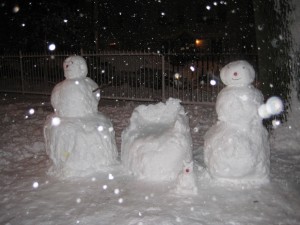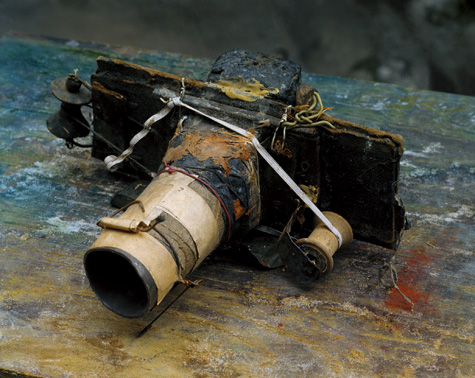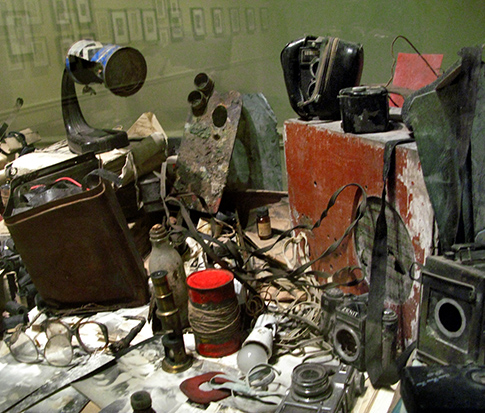If you’ve never seen Pae White’s work, this would be a good excuse to go see the 2010 Whitney Biennial. Being an admirer of Ms. White’s work, which has narrative qualities combined with designer’s aesthetics, I was not disappointed at her chosen piece for the Biennial.
When the elevator doors opened to a huge Pae White tapestry on the third floor of the Whitney I was mesmerized. This is my first Whitney Biennial experience, I have to admit, even though I’ve been in New York most of my life. But 2010 is starting out good, as the optimistic buzz has been going around in the art world.
The huge tapestry shows a cloud of smoke, in its pure form, blown up to a dramatic proportion, revealing subtle changes in light, shadow, form containing air, and all the connotations behind it. I give respect to the curators who decided to put this piece as a greeting to an amazing show. If time allows, I’d write a broader description about the entire Biennial but I’d rather focus on one good piece: Pae White’s Smoke Knows. At first glance, you might think that it’s a painting, but stepping closer, or for those who knows Ms. White’s work, you’ll know that it’s a more complicated process. As a huge hanging tapestry, it’s quite complicated to produce. Is there another artist out there that uses this traditional method of tapestry professionally in their work? I can only think of the stuff hanging in the Met or the Cloisters dating back to the Medieval days.
The photographic image of smoke can suggest many things, but to the modern eye it becomes an illusion, both sexy and dreamy. White describes it as the “‘dream of becoming something other than itself’ by contrasting an image of something immaterial with the physicality of fabric”. Isn’t that the goal of being an artist? To become something other than themselves… As I walk past White’s smoky image into the other works, I instantly have to shift into numerous other little worlds. Although I have to say, the third floor is my favorite, I didn’t find any other pieces as strong as Pae White’s. She is brilliant in her choice of method, subject, simplicity, and finally in scale.
The Whitney Biennial runs from Feb. 25 to May 30.









 RSS
RSS
